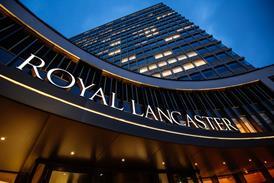July 28 - Air cargo demand jumped by more than a quarter in June compared with a year ago according to a monthly report from IATA, the International Air Transport Association.
International freight traffic in June was 26.5 percent higher than a year earlier, down from the 34 percent recorded in May 2010. May was exceptionally high as some interrupted traffic from April's ash crisis shifted to May. Volumes remain 6 percent above the pre-recession peak in early 2008.
Freight demand continues to follow economic recovery and trade patterns with airlines in Asia-Pacific (+29.8 percent), Middle East (+39.6 percent), Latin America (+44.9 percent) and Africa (+54.0 percent) growing the fastest.
Carriers in North America (+24.2 percent) occupy the middle ground.
Europe (15 percent) is growing at half the rate of the fastest growing regions based on slower economic growth. This trend is particularly evident in Europe which is the only region still 5-6 percent below the pre-recession peak. The low value of the Euro will be a help to the region's exporters and eventually drive up freight volumes.
IATA Director-General Giovanni Bisignani said these double-digit growth rates were unlikely to be maintained.
"Business confidence remains high and there is no indication that the recovery will stall any time soon. But with government stimulus packages tailing off and restocking largely completed, we do expect some slowing over the months ahead," he said.
The data provides valuable insight of trade and the overall global economy. IATA estimates that some 30 percent of world trade by value more expensive goods rather than bulk cargos are moved by air.
IATA revised its own forecast for 2010 industry financial performance to a profit of USD2.5 billion from a loss of USD2.8 billion.
Airline capacity increased slightly above demand in June, keeping load factors - an industry measure of capacity usageclose to historical highs at 53.8 percent for freight.
Bisignani said that orders for more than 400 new aircraft at the Farnborough Air Show were a sign of growing confidence, but would make it harder to match capacity with demand.
















